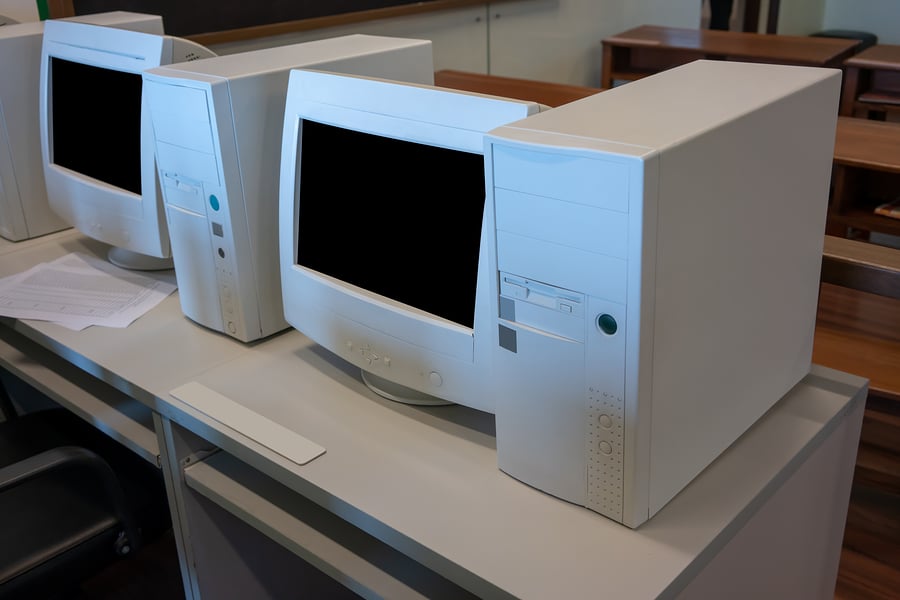Challenges in CRT Recycling

If you’ve been in business for a while and you’re just getting around to creating IT asset disposition (ITAD) policies and procedures, you could have a significant backlog of outdated equipment languishing in supply rooms or off-site storage warehouses. As you’re no doubt aware, you have to take care in disposing of old equipment and devices, not only to ensure compliance with applicable consumer privacy laws, but also environmental standards.
In addition to the toxic metals and other substances many electronic devices are known to contain, you may also find yourself dealing with older monitors that contain cathode ray tubes, or CRTS. These present a problem when it comes to e-waste disposal because, according to the EPA, “CRT funnel glass generally contains high enough concentrations of lead that the glass is regulated as hazardous waste when disposed.”
When CRTs were the only game in town, they could simply be refurbished for use in new monitors, but since flat screens have become the norm, businesses now have to figure out other options for recycling, and this can present a major headache. What are some of the challenges inherent to CRT recycling and what can your Sioux Falls, SD business do to overcome them?
The Costly Recycling Process
The process of recycling CRTs is lengthy and expensive, making it cost-prohibitive for businesses. Because these tubes are made of glass, they can’t simply be shredded, like other e-waste. They must first be taken apart by hand to remove glass components and separate out materials that can be reused, including metals like copper and steel, as well as plastics.
Next, glass containing toxic lead (funnel glass) must be separated from non-toxic (panel) glass, as the latter can be recycled and reused. Unfortunately, this is a dangerous process because of the toxic materials involved, which makes it more difficult and expensive.
Finally, the toxic glass is subjected to a heating process to remove the lead so that the glass can essentially be cleaned for reuse and the lead can be turned into ingots for resale. Because there are so many steps involved in recycling CRTs, many of them manual, and the process includes strict safety controls, it can be a major expense for businesses that have myriad CRT monitors.
Finding a Vendor that Recycles CRTs
Because of the costs inherent to CRT recycling these days, many companies have chosen to simply sit on their stockpiles of outdated equipment. However, you don’t necessarily want these potential toxins on-site, nor do you want to pay to store them indefinitely.
A better solution is to partner with a certified ITAD service provider that recycles CRTs. If you build a long-term relationship for ongoing ITAD services, you may be able to broker a deal that includes discounted rates on CRT recycling. At the very least, you’ll stop throwing away money on storage of these ancient devices and you’ll eliminate the potential liability they pose.
If your Sioux Falls, SD business is looking to recycle CRTs and partner with a certified ITAD service provider, contact the experts at SEAM today at 605-274-7326 (SEAM) or online to request a quote.
SEAM provides IT recycling and data destruction services including onsite shredding and hard drive wiping to South Dakota, North Dakota, Minnesota, Iowa, and Nebraska.
Schedule a pickup or contact us for more information.





